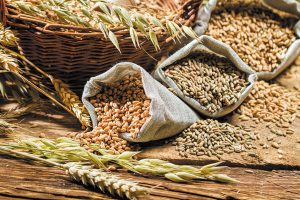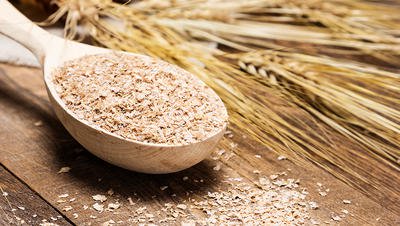Date: November 30, 2017
Published By: Anthoney J. Andersen
With the holidays in full force, you’re probably worried about the unwanted pounds that you’ll be adding to your waistline, so it’s wise to start thinking of an “exit strategy” now, that way your body has less time to recoup, and you can quickly return to your desired pant size.
With the plethora of sweets and other high calorie foods that flood your family’s Thanksgiving and Christmas dinner tables, wouldn’t it be a good idea to prep your body the other ten months out of the year for this overindulged banquet of delicious festivity?
In doing so, wouldn’t you also want to statistically reduce your mortality rate by fifteen percent – while keeping off the pounds – by just making one dietary change?
Then choose whole grain foods whenever you can.
WHAT ARE WHOLE GRAINS?
You have probably heard the fine fettle tune of “whole grains are good for us,” but you probably didn’t realize that you may be among one of the many Americans who eat less than one serving of whole grains a day. According to WebMD, whole grains are chock-full of fiber, phytochemicals, vitamins and minerals.

So, what’s stopping us from eating these healthy grains?
All whole grain kernels contain three parts: bran, germ and endosperm. Each section houses healthy promoting nutrients.
According to the Food and Drug Administration (FDA), a product should contain intact, ground, cracked or flaked cereal grains that still contain their bran, germ and endosperm to be considered whole grain.
The bran is the fiber-rich outer layer that supplies B vitamins, iron, copper, zinc, magnesium, antioxidants, and phytochemicals – natural chemical compounds in plants that have been researched in their role in disease prevention.
The germ is the core of the seed where growth occurs; it is rich in fats, vitamin E and antioxidants.
The endosperm is the interior layer that holds carbohydrates protein and small amounts of vitamins and minerals.
According to the Harvard School of Public Health, these components have various effects on the body:
- Bran and fiber slow the breakdown of starch into glucose – thus maintaining a steady blood sugar rather than causing sharp spikes.
- Fiber helps lower cholesterol, as well as move waste through the digestive tract. Fiber may also help prevent the formation of small blood clots that can trigger heart attacks or strokes.
- Phytochemicals and essential minerals – such as magnesium selenium and copper – found in whole grains may protect against some cancers.
While the FDA provides these guidelines, manufacturers play loose with their labeling of whole grains.
Some products label themselves as whole grain, but only contain some whole grain ingredients. The FDA recommends looking for products that are labeled as “100 percent whole grain” instead of just “whole grain,” to get the most whole grain content.
The Whole Grains Council – a nonprofit consumer advocacy group working to increase whole grain consumption for better health – recommends that consumers pay close attention to the nutrition label. If the first ingredient is listed as a whole grain, the product is more likely to contain more whole grain.
HOW TO CHOOSE WHOLE GRAIN FOODS
Whole grains cannot be identified by the color of the food. Bread, for example, can be brown because of molasses or other ingredients, not necessarily because it contains whole grains. That is why it’s important to read the ingredient list on the food nutrition label. For many whole grain products, you will see the words “whole” or “whole grain” before the grain’s name in the ingredient list.
According to the American Heart Association, it’s recommended that you choose whole grain foods that contain one of the following ingredients first on the label’s ingredient list:
- Oatmeal
- Whole wheat, graham flour
- Whole oats
- Brown rice
- Wild rice
- Whole-grain corn
- Popcorn
- Whole-grain barley
- Whole-grain bulgur and whole rye
These are all whole grains.
GETTING THE RIGHT AMOUNT
How many servings of whole grains do you need each day? It depends upon your age, gender and calorie needs. The American Heart Association recommends that at least half of your grains are whole grains.
It’s recommended that you obtain fiber from food, rather than fiber supplements. Check the Nutrition Facts label on food packages to find foods that are high in fiber. The daily value for fiber is 25 grams per day for a 2,00-calorie diet.
The following count as 1 ounce-equivalent (or 1 serving) of whole grains:
- 1 slice whole-grain bread (such as 100 percent whole wheat bread)
- 1 cup ready-to-eat, whole grain cereal
- ½ cup cooked whole grain cereal, brown rice, or whole wheat pasta
- 5 whole grain crackers
- 3 cups unsalted, air-popped popcorn
- 1 6-inch whole wheat tortilla
WORD OF CAUTION
Even though whole grains are highly beneficial to a healthy diet, if whole grains are all you consume, you may need to make sure you get sufficient amounts of folic acid – a B vitamin. While most refined grain products are fortified, whole grains are not typically fortified with folic acid.
Look for whole grains that have been fortified with folic acid, such as some ready-to-eat cereals. Eat plenty of other folate-rich foods – such as fruits, vegetables and legumes. Folic acid is especially important for women who become pregnant or are pregnant.
Eating a variety of whole grains not only ensures that you get more health-promoting nutrients, but also helps make your meals and snacks more filling.







